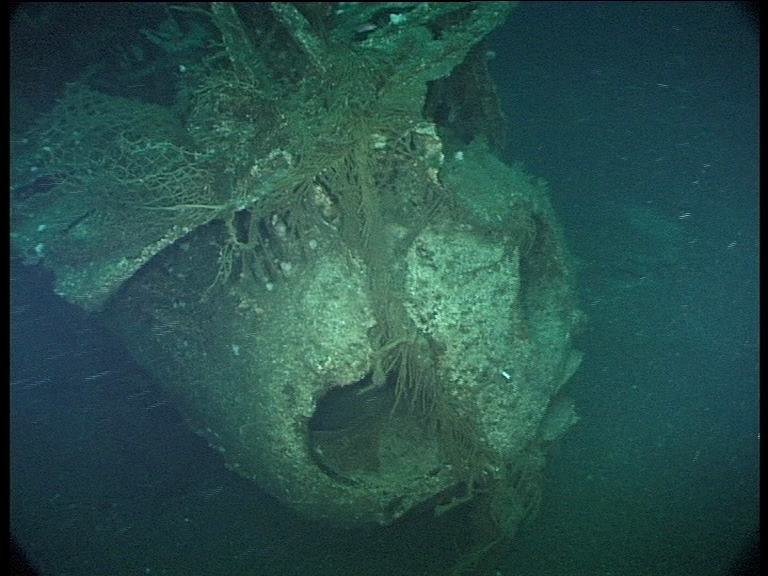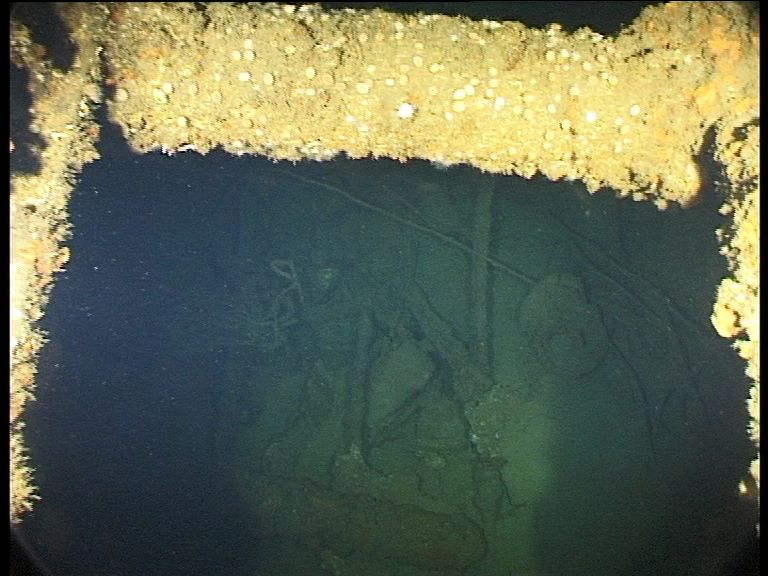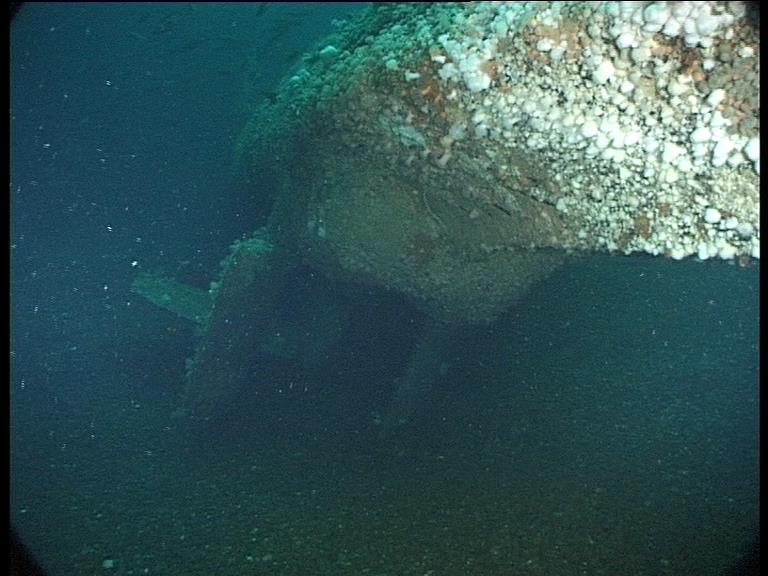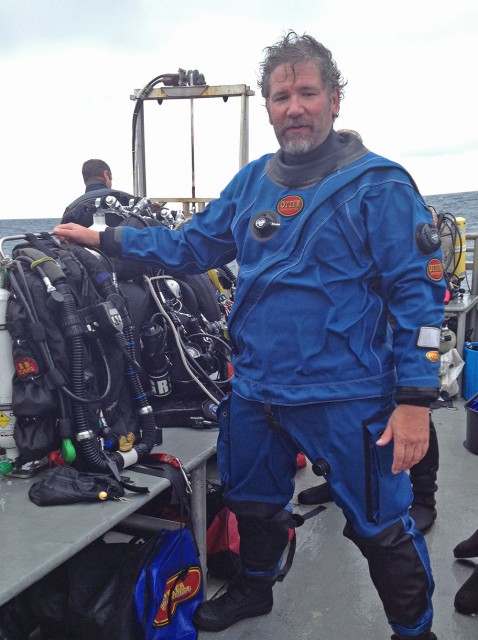U-155 had the youngest U-boat commander during the war since Von Friedeburg was only 20 years old. In December, Kptlt. Erwin Witte took over and was relieved in April 1945 by Oblt.z.S. Friedrich Altmeier.
Altmeier commanded the boat for one month before the German surrender in May 1945; she was then scuttled by the Royal Navy. The wreck was located, largely intact, in 2001.
U-155 conducted 10 patrols, sinking 26 ships totaling 126,664 gross register tons (GRT), one warship of 13,785 tons and damaging one auxiliary warship of 6,736 GRT. She was a member of one wolf pack. She sank a warship and a troop transport ship, and damaged a cargo ship, with one salvo of four torpedoes on 15 November 1942 during her fourth patrol, and shot down a P-51 Mustang aircraft on her final patrol.
On 30 June 1945, after the German surrender, she was transferred from Wilhelmshaven to Loch Ryan, Scotland for Royal Navy Operation Deadlight, the scuttling of surrendered German U-boats, and sunk on 21 December the same year.
U-155 was located and identified in 2001 by a team of divers led by nautical archaeologist Innes McCartney, revealing the wreck was lying upright on the seabed, largely intact, at a depth of 73 meters (240 ft; 40 fathoms).
Her crew held their 25th reunion in 1995 with former Oberleutnant zur See Johannes Rudolph and one of the Mosquito pilots who attacked the boat in June 1944 ‘on board’.
Forward end of the pressure hull, with the top two torped tube recesses clearly visible (Innes McCartney). 
Stunning visibility meant the wreck could be seen from 40m during the ascent (Innes McCartney).
Inside the forward torpedo room (Innes McCartney). 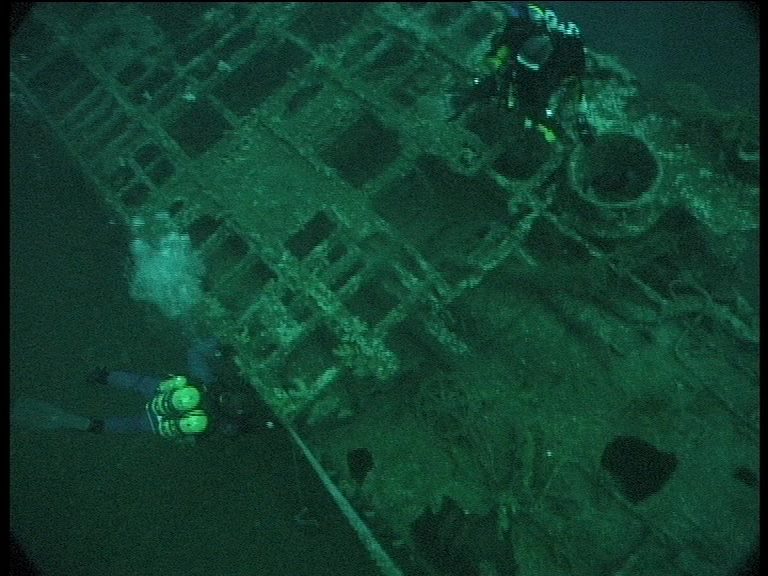
After deck facing conning tower (Innes McCartney) 
Compass repeater binnacle and HF loop lying on the foredeck (Innes McCartney). 
Snorkel head in its housing on the starboard side of the foredeck. The ball float is in place along with the air warning radar dipole on the top (Innes McCartney). 
Aphrodite cylinders aft of the conning tower (Innes McCartney).
Stern with twin rudders and torpedo tubes (Innes McCartney). 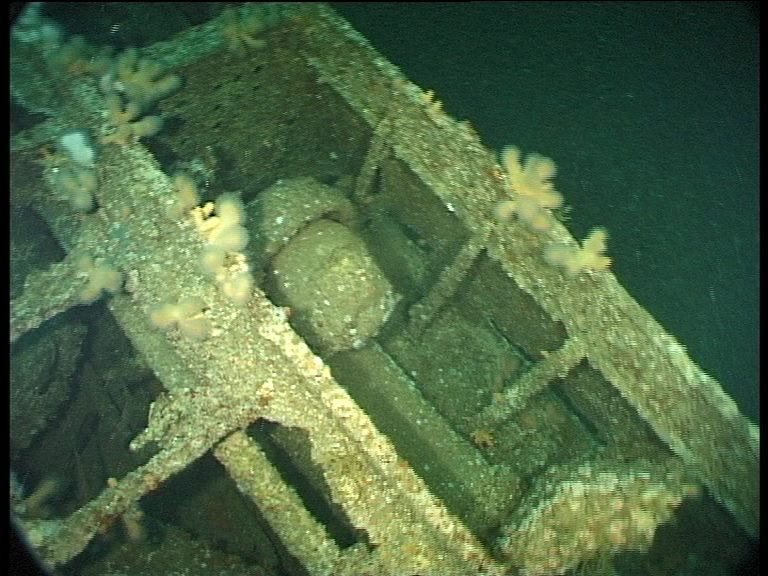
The snorkel (Innes McCartney). 
Twin air intakes behind the conning tower (Innes McCartney). 
The torpedo tubes which sunk an aircraft carrier – HMS Avenger (Innes McCartney). 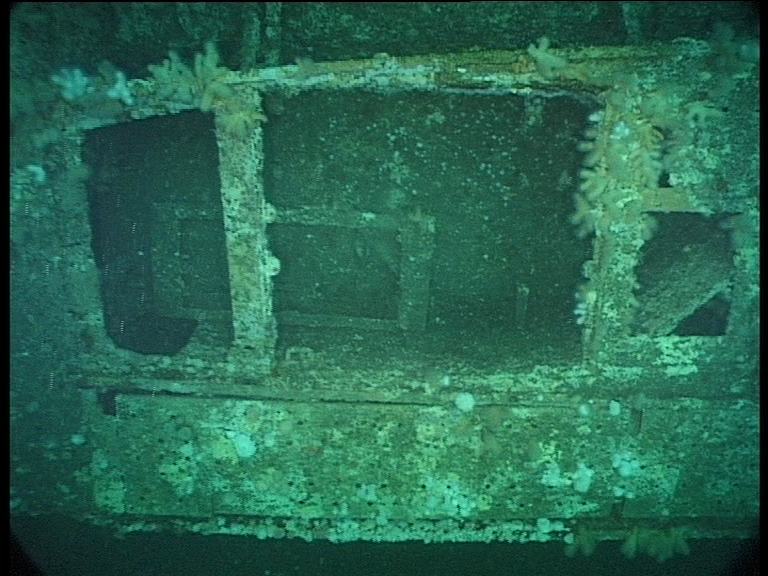
The tender container on the aft deck – boat shaped! (Innes McCartney) 
Looking down the conning tower hatch into the control room below (Innes McCartney). 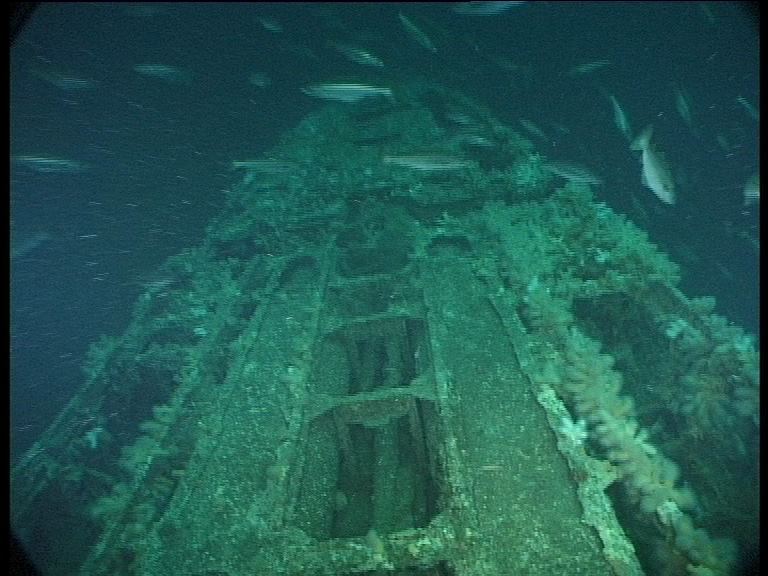
Aft deck with spare torpedo holders (Innes McCartney). 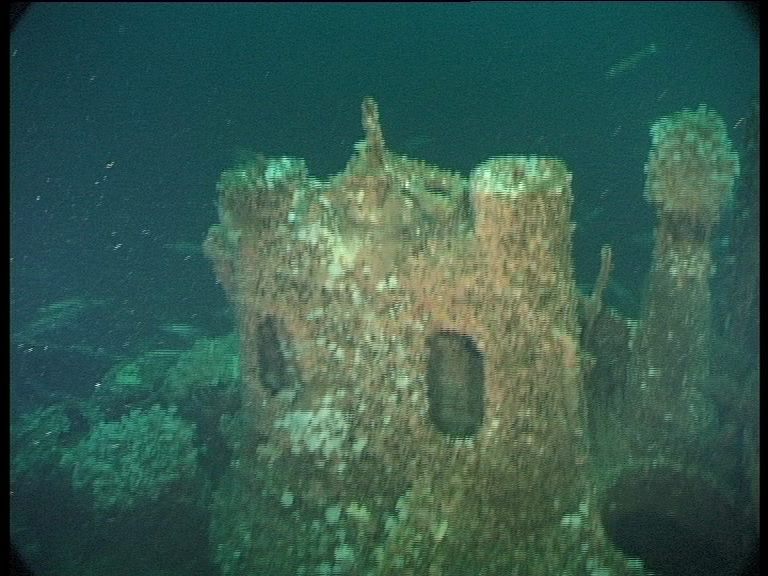
The double periscope stand – a design feature on larger U-boats which dates back to WW1 (Innes McCartney). 
stunning visibility meant the wreck could be seen from 40m during the ascent (Innes McCartney). 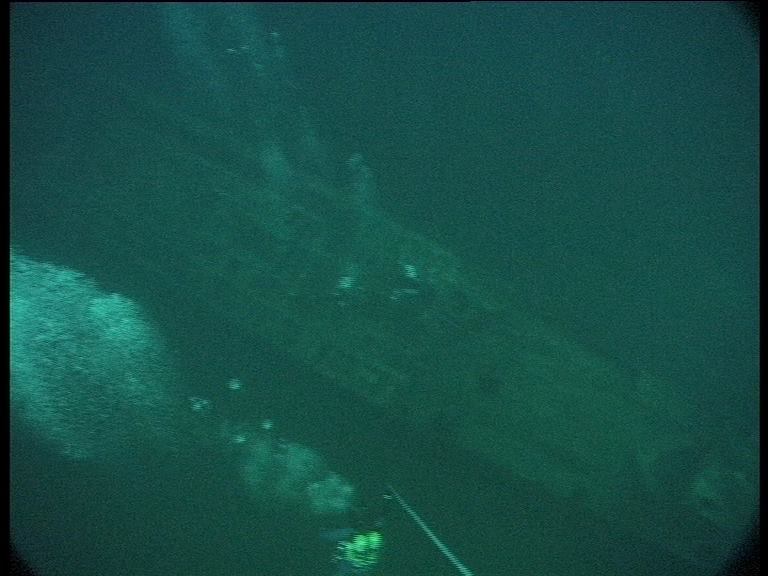
Goodbye U155…another truly awesome discovery. One of several new Operation Deadlight U-boats I found in 2001-3 (Innes McCartney). 
Goodbye U155…another truly awesome discovery. One of several new Operation Deadlight U-boats I found in 2001-3 (Innes McCartney). 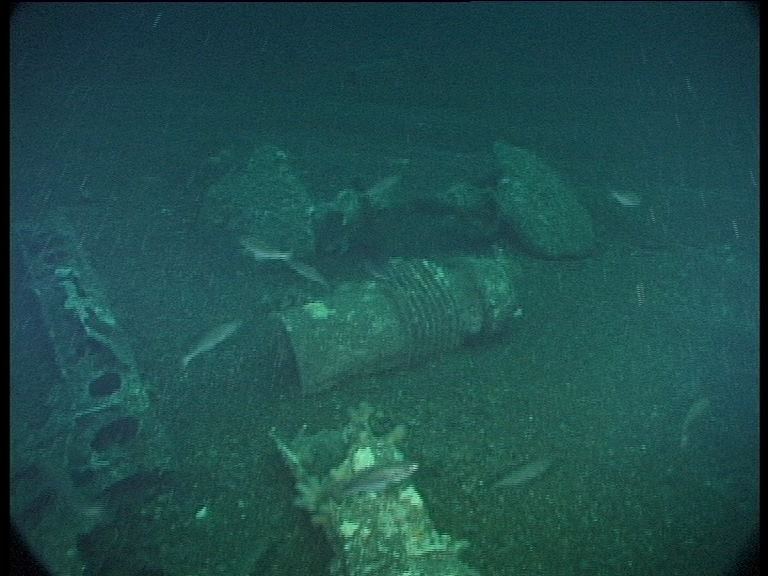
Torpedo tubes with the fore hydroplanes assembly on the sand behind (Innes McCartney).
The massive stand for the 37mm AA gun (Innes McCartney). 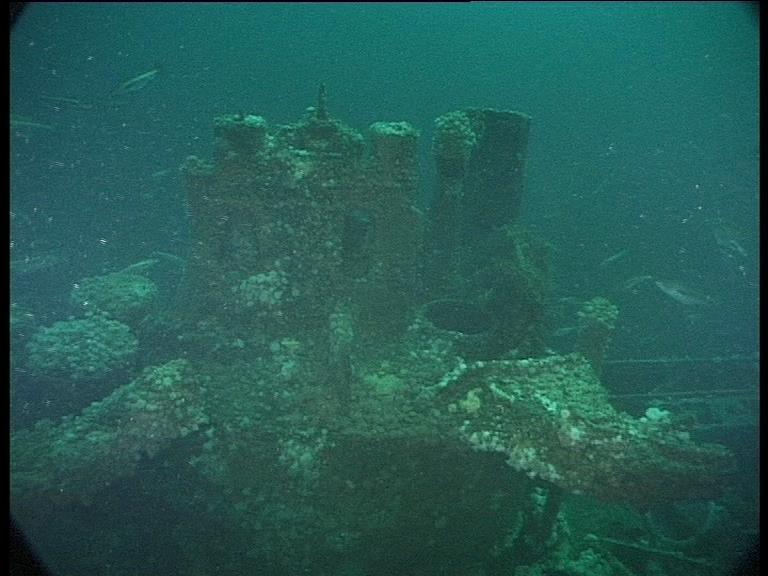
The massive stand for the 37mm AA gun (Innes McCartney). 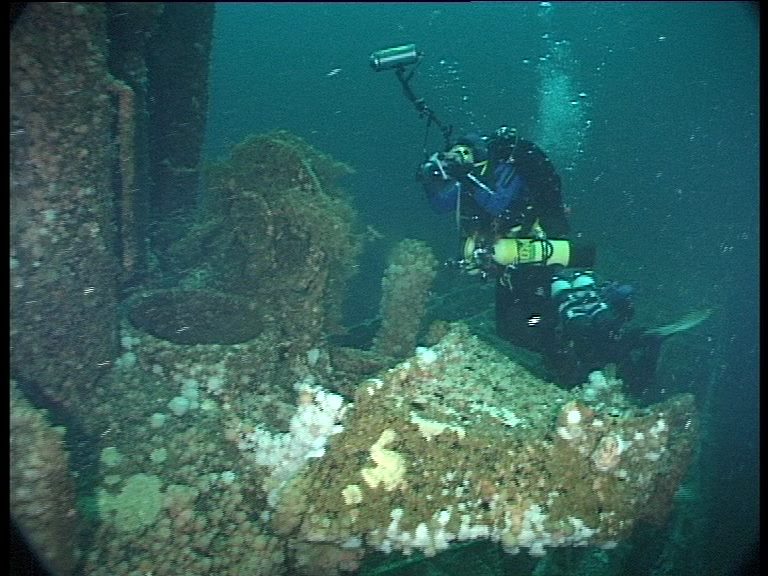
My wife Patricia photographing the open conning tower hatch (Innes McCartney) 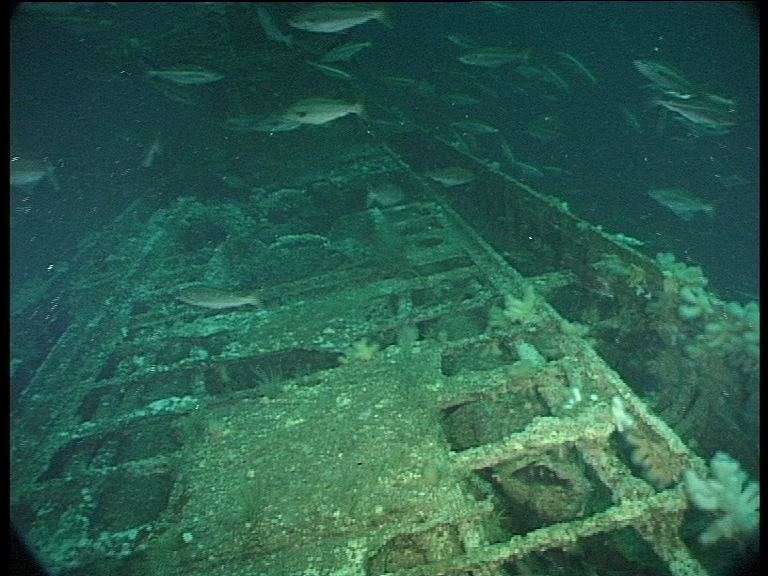
The broad foredeck characteristic of the long-range Type IX U-boat (Innes McCartney). 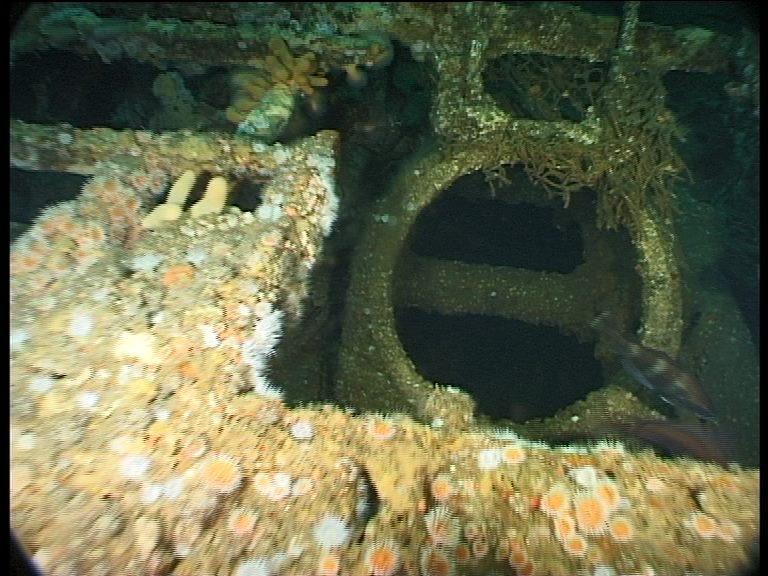
Open forward torpedo loading hatch (Innes McCartney). 
Damaged foredeck (Innes McCartney). 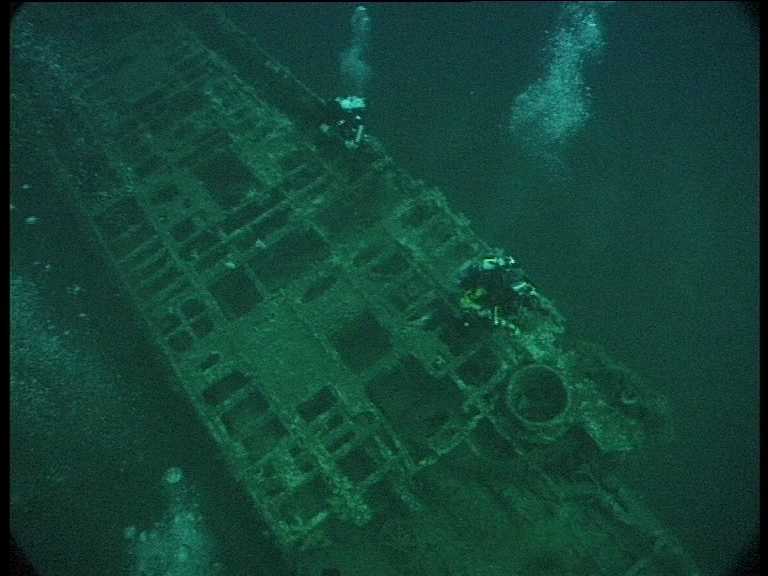
You can follow Innes on Facebook, Twitter and you can buy many of his books via Amazon

